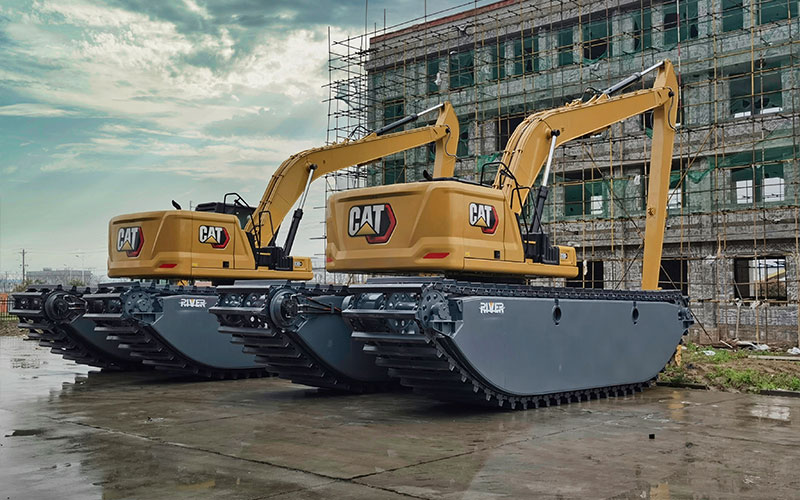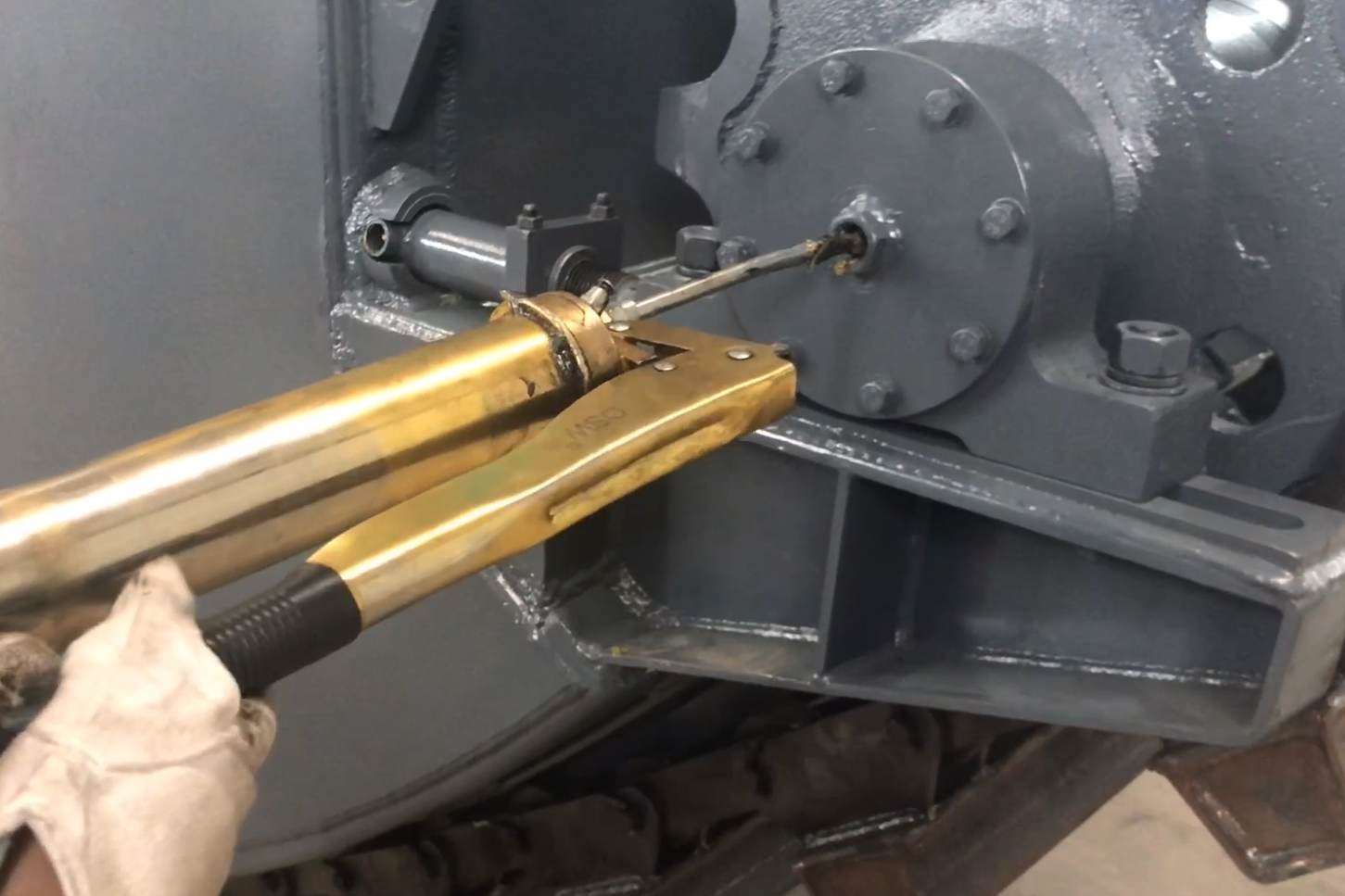Performing installations, maintenance, repairs, restorations, or construction projects in marshes or wetlands becomes challenging without the right equipment. As the challenge depends upon the specific weather conditions, having the appropriate equipment is the need of the hour, too. That is where we need the unique, advanced, and most popular equipment named amphibious equipment—an ultimate solution provider. Such versatile equipment can perform on land and water, ensuring efficient equipment and personnel transportation across challenging terrains.
Likewise, wetland equipment performs its role in a waterbody amid marshes or wetlands. As it ensures efficient transportation of equipment and personnel across terrains, its demand always remains high in China and almost all parts of the world. Read on to learn more about it and its exclusive uses.
What is Amphibious Equipment?
Being a sturdy, durable, and versatile machine, everyone must pay attention to amphibious equipment to complete some mega projects. For example, amphibious dry equipment is perfect for outdoor fixations, sports, and leisure activities. Designed by an expert team of technicians and engineers, this equipment supports completing various crucial activities from aquatic to mountaineering, skiing, motorcycling, camping, travel, leisure, etc. This equipment is, instead, an all-inclusive tool in the current context.
- Why Need It: Amphibious equipment is used for different purposes. Their needs vary when the projects are in challenging wetland environments, flooded regions, and marshy and inaccessible terrains, as they are the only options for several engineering, dredging, and mining applications.
- The Importance of Choosing the Right Equipment: Using the right tools in the right ways will reduce fatigue and increase productivity levels in the workforce. It will also improve the quality of work, thus lowering the risk of injuries or accidents. That is why amphibious and, often, amphibious dry equipmentplay a vital role and are crucially important.

Different Types & Categories of Amphibious Equipment
The amphibious equipment types vary depending on the specific functioning. Amphibious Excavators are designed equipment for dredging jobs while they remain afloat on the softest swamplands or in shallow bogs. Such equipment can have access to spaces impossible for the traditional barge-mounted dredgers. In the mining dredging industry, its role remains remarkable.
Choosing right amphibious euqipment
The criteria for selecting the right equipment for the specific work can make all the difference. Regarding projects in challenging wetland environments, amphibious equipment is a unique tool that enhances efficiency and productivity. Yet, selecting an appropriate amphibious equipment for your project requires considering the various factors involved. Factors like project scope and requirements, machine size and weight, mobility, and terrain-to-attachment compatibility are all key factors.
Likewise, keeping environmental considerations, operator comfort and safety in maintenance and serviceability are other crucial factors. Besides budget considerations, fuel efficiency, operating costs, and brand reputation and support should be the prime factors for top amphibious equipment options for 2024 to help find genuine machines.
Amphibious Equipment Options for 2024
Combine quantitative and qualitative assessments to make your amphibious vehicles’ selection this year. The vehicles are classified by keeping the type, application, and region under consideration. You can create the best choice with a comprehensive and insightful perspective of amphibious vehicles, a prime focus on the essential aspects of amphibious cars, and the latest amphibious dry equipment.
Innovated Amphibious Excavators: They come with enhanced features or applications and thus work even in challenging terrains, marshes, swamps, and soft terrains. With the capability to float on the water, they have a multi-synchronous hydraulic motor direct drive system to power pontoons for superior tracking in all terrains. The applications include maintenance of waterways, erosion control, and flood protection works to access difficult watery and soft terrain areas that regular excavators can hardly reach.
Considerations for Buy or Use
Amphibious equipment or vehicles with tracks enable you to drive on land. They are safer to embark on, such as incidents on docks, with a trailer, or with a dinghy, which is avoided. As beach landers, they disembark on the most remote beaches and secluded coves for users’ ease.
- Budgetary Concerns: The budget and space allocations to the equipment list are needed. The prioritization of needs is necessary to make a budget.
- Maintenance and Durability: An amphibious equipmentvehicle needs more maintenance than regular ones because of its complex design and operating environment. Ensure they work well and last long. A key issue is the common corrosion concern due to constant water exposure. Such exposures can lead to metal components’ decay, cracks, and fatigue.
Corrosion may damage the equipment structure, leading to early failure and maintenance problems. Regular maintenance performed under the guidance of qualified engineers and technicians makes things easy. Environmental Impact Assessment (EIA) is a tool for assessing the significant effects of a project or development proposal on the environment. It ensures that project decision-makers consider the likely impact on the environment at the earliest possible time to avoid, reduce, or offset such effects.
Future Trends in Amphibious Equipment
Global Amphibious Vehicle Market Analysis and Forecast highlight the constant technological advancements and increasing demand for amphibious equipment and tourist vehicles. Market predictions state that due to their fast-growing demands in the Defense, Tourism, and Disaster Management sectors. Sustainable innovation is:
- The development of energy-efficient technologies;
- Implementation of waste reduction strategies;
- The promotion of sustainable practices;
- The integration of social responsibility into innovative business.
Preferring to an amphibious equipment rental option can be a unique choice for saving resources and finishing specific projects on time without buying equipment. Cost can be a factor for contractors or project handlers; hence, they often prefer renting amphibious equipment. Looking into the demands, many companies and firms also let out such equipment on hourly or term rentals.
Conclusion
Discover how advanced amphibious technology is transforming marine research and exploration. It assists scientists in delving deeper into the ocean’s mysteries. From cutting-edge underwater drones to adaptable amphibious vehicles, amphibious equipment offers much to learn about how such innovative tools expand our understanding of the marine world. They open up new possibilities for exploration and conservation efforts.
FAQs
- What is the precise use of an amphibious excavator?
Amphibious excavators are unique equipment for working where the ground is soft, marshy, and unstable. Due to a floatation system, it prevents from getting bogged down in peat, sand, and other soft operating areas.
- What does a marsh master do?
The Marsh Master Amphibious Marsh Buggy is a challenging and durable machine. From the unique pontoon tracks with high flotation and ground clearance to auxiliary tool systems and hydrostatic drives, Marsh Master vehicles are built to perform and last.
- Are amphibious equipment categories too many?
Yes, amphibious equipment comes in different categories for many purposes. They are customizable with accessories.
- Is China the hub ofamphibious equipment?
Many reputed manufacturers and suppliers, including us, offer amphibious equipment to local and international clientele, thus turning the Chinese market into a market leader and hub with global recognition.
